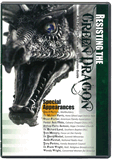
Fireproof Forest
Giant sequoias are some of the oldest and largest living organisms on earth. At the time of Christ's birth, some of today’s giant sequoias had been climbing toward the sky for over a thousand years in North America’s Sierra Nevada mountains.
How do these trees live so long and grow so large in a sin-cursed world plagued by pests and fire?
The giant sequoias’ bark contains tannin, a chemical that gives the branches and trunk a red color. Tannin (and other extractives) protects the trees against rot-causing fungi and bacteria and against insects like wood-boring beetles. Additionally, the bark lacks flammable resin, allowing it to withstand fire. And because the bark is up to two feet thick, fire rarely reaches the vascular cambium (the part of the trees that produces new cells).
Giant sequoias actually thrive in fire that’s not too hot. Fire clears the brush around the tree, loosens the soil to expose minerals, and weeds out neighboring trees that compete for light and water.
Up in the crown, the fire’s heat dries the sequoias’ cones so they crack open, letting the seeds fall to the ground. With the forest canopy now thinned, ample sunlight streams through to nourish the young seedlings.
The majestic sequoia forests of California, which have survived thousands of years of fire and other natural disasters, remind humanity how lavishly the eternal Creator provides for his creation—both tall and small.
Answers Magazine
January–February 2020
Unlikely Weapon: The bombardier beetle provides explosive evidence of God’s intricate design.
Browse Issue SubscribeRecommended Resources

Answers in Genesis is an apologetics ministry, dedicated to helping Christians defend their faith and proclaim the good news of Jesus Christ.
- Customer Service 800.778.3390
- © 2024 Answers in Genesis





